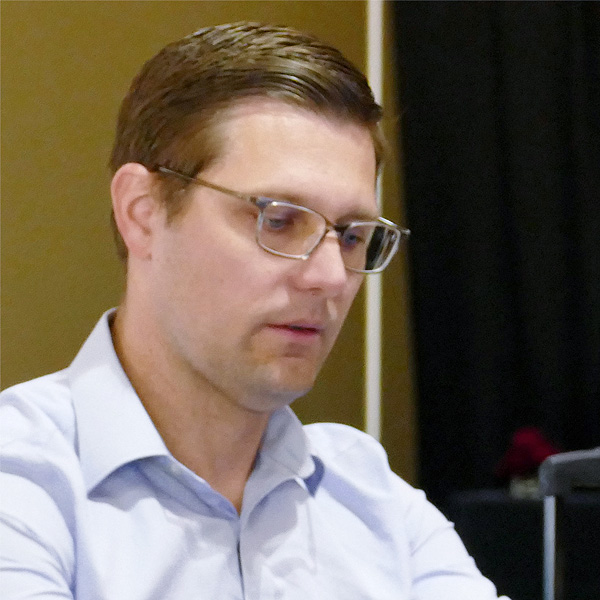Stakeholders Endorse Manual Revisions to Implement CIFP Changes to Capacity Market
The Market Implementation Committee endorsed by acclamation a rewrite of Manual 18 to implement market redesigns drafted through the Critical Issue Fast Path (CIFP) process last year and approved by FERC in January. (See FERC Approves 1st PJM Proposal out of CIFP.)
If endorsed by the Markets and Reliability Committee, the revisions would expand the use of effective load carrying capability (ELCC) analysis for accrediting all generation types, require that planned resources notify PJM of their intent to participate in a Base Residual Auction (BRA) at least 90 days in advance and change how generation unforced capacity (UCAP) values are calculated.
The Planning Committee endorsed related revisions to Manuals 20, 21 and 21A on April 30 to reflect the risk modeling and accreditation changes the commission approved.
The revisions to Manual 18 would shift the calculation of the maximum annual nonperformance penalties generators face to be based on the net cost of new entry (CONE) — effectively decreasing the penalty over the current use of auction clearing prices.
First Read on Proposed Demand Response Energy Market Parameters
PJM’s Pete Langbein presented a proposal to add two energy market parameters for demand response resources that would allow them to specify a maximum run time and a minimum “cooldown” period after being dispatched before the resource can be committed again.
Langbein said PJM plans to ask the committee to endorse the revisions June 5 with the aim of filing the proposal at FERC in October. He said the filing likely would request a nine-month implementation period due to the complexity of changing the market clearing engine and to allow testing of the changes.
Langbein said there are differences between a resource saying it’s not economical to operate under certain conditions and being able to respond to a capacity call.
“They’re not saying they can’t respond; they’re saying they don’t want to respond because it’s not economical,” he said.
Update Re-evaluation of CONE Inputs
PJM plans a June 5 presentation to discuss analysis by the Brattle Group on whether the CONE values produced by the most recent quadrennial review remain accurate or should be updated to reflect rising interest and construction costs. (See “PJM Re-evaluating CONE Inputs,” PJM MRC Briefs: April 25, 2024.)
FERC approved the quadrennial review in February 2023, accepting a shift to a forward-looking energy and ancillary (EAS) offset and a combined cycle reference resource, rather than the previous combustion turbine. (See FERC Approves PJM Quadrennial Review.)
PJM’s Skyler Marzewski said a quick-fix proposal revising the inputs to the CONE calculation may be included in the June presentation, with the aim of submitting a FERC filing in August or September. Any changes to CONE values would be effective for the 2027/28 BRA. The quick-fix process allows for an issue charge and proposal to be voted on concurrently.
PJM’s Pat Bruno said Brattle’s analysis includes whether there should be more regular revision of the CONE inputs, possibly through escalation factors.
Stakeholders Regroup on Energy Efficiency Rules After MRC Rejection of Proposals
Proposals rewriting how the capacity contributions of energy efficiency resources are measured and verified were brought back to the drawing board after the MRC rejected four packages in March. (See “Stakeholders Reject Changes to EE Measurement, Verification,” PJM MRC/MC Briefs: March 20, 2024.)
PJM questioned the value EE provides, with Langbein stating he has yet to see a case made that capacity market revenues are incentivizing the purchase of devices more efficient than what consumers otherwise would have bought.
“They shouldn’t be able to claim things that are naturally going to occur … if I’m making a decision to purchase a high-efficiency air conditioner, an EE provider shouldn’t be able to claim that unless they can prove” that they incentivized the purchasing of that unit over a less efficient product, Langbein said.
Luke Fishback, of Affirmed Energy, said the purpose of EE is to find the most economically efficient way of pricing a guaranteed reduction in consumption over PJM’s load forecast.
Several items were added to the solution matrix, including requirements for when EE providers may need contracts with each of the end-use customers participating in EE programs. PJM also modified an option previously part of its package, which would require end-use customer data be provided to PJM, to only require that data be provided to the RTO upon request.
The stakeholder process is focused on developing package components, which could be used to develop new proposals for the committee to consider later.

